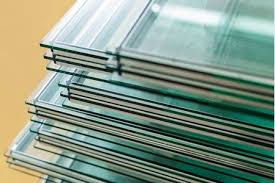Tempered glass, also known as safety glass, is designed to shatter into small, harmless pieces rather than dangerous shards. This feature makes it a crucial component in various applications where human safety is paramount. For glass processors, ensuring that all tempered glass products meet safety standards is essential. Here are four key strategies to ensure your glass is truly safety glass and avoid costly recalls.

1. Perform the Break Test
Safety glass standards specify how tempered glass should break. In North America, the ANSI Z97.1 standard defines the maximum weight of the largest broken glass pieces. The EN 12150 standard, used in Europe, specifies the number of small pieces, or cullets, in a 5 cm x 5 cm area when the glass is broken. Standards in China and Japan follow the EN measurements.
The current EN standard mandates specific cullet counts based on glass thickness: a minimum of 15 pieces for 3 mm thick glass and 40 pieces for glass between 4-19 mm thick. To ensure your products consistently meet these standards, implement a break test procedure. Conduct the break test at least once per hour and whenever you change glass types.
Upcoming Changes:
The new proposal for EN 12150 includes 2 mm glass in the standard.
The requirement for 3 mm glass will become stricter, increasing to 40 pieces.
2. Measure the Compressive Stress
Using non-destructive testing systems to measure the compressive stress of the glass can verify its strength without breaking it. For glass thicknesses between 3-19 mm, surface compression stress correlates well with cullet count. According to the EN standard, the minimum surface compression should be 90 MPa.
Important Notes:
Measurement tolerances exist, especially with very high compressive stresses or thin glass (e.g., 2 mm).
For 2 mm glass, a surface compression of over 120 MPa is required to produce the minimum number of cullets.
Bending strength and surface compression are different metrics. Surface compression is typically 20 MPa lower than bending strength. For example, 2 mm thick glass has a surface compression of 120 MPa and a bending strength of 140 MPa.
3. Utilize Tempering Line Reports
Modern tempering lines often come with automated reporting features that provide data on glass temperature after heating and the actual pressure used during the quenching/tempering process. These reports can help verify that the glass has been properly tempered. Ensure your measurement technology is accurate and reliable to confirm the glass’s strength.
4. Calibrate Measurement Systems
Regular calibration of all measurement systems is critical, both in the tempering line and for glass strength measurements. Accurate calibration ensures that your systems provide correct readings, which are essential for maintaining consistent quality and safety standards.
Conclusion
At H&H Glass Machinery, we prioritize safety and quality. By implementing these four strategies, you can ensure your tempered glass products meet all safety standards and protect both your business and your customers. Regularly perform break tests, measure compressive stress, utilize tempering line reports, and calibrate your measurement systems to maintain the highest safety standards. Contact us for more information on our glass safety solutions and how we can help keep your glass products compliant and secure.


Comments